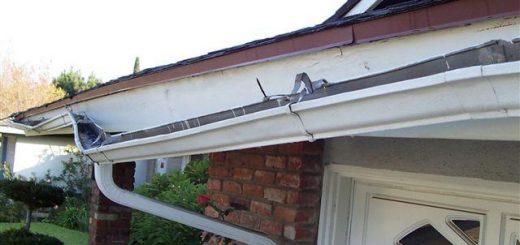3 Essential Things You Should Know about Underpinning
 If you’ve found that your front door sticks and there is a crack there, your building consultant will tell you that there is a problem in your foundation. You may become sad to hear this because you may think that your house may have to be demolished now. But no! The problem can be resolved by something called underpinning. This is a technique used to increase the depth of foundation or repair faulty foundations.
If you’ve found that your front door sticks and there is a crack there, your building consultant will tell you that there is a problem in your foundation. You may become sad to hear this because you may think that your house may have to be demolished now. But no! The problem can be resolved by something called underpinning. This is a technique used to increase the depth of foundation or repair faulty foundations.
Thus, if you plan to get your basement underpinned, understand that it would be a huge project. There would be a lot to learn so that it would be useful to you at the time of the work.
Here are a few things which you may have in your mind about underpinning and you can know what exactly to expect.

1. Extent of Underpinning
If there is a problem like the above-mentioned one in your house, you will need first to know the extent of the problem in order to know the extent of your underpinning project. For this, you’ll have to consult an expert like:
- A structural engineer who can examine your house and submit an engineer’s report
- A concreter or other trade professional who is specialised in underpinning and can give you a quote

Structural engineers charge for submitting a report and may also require a geotechnical engineer for taking soil samples. To skip their charges, you may be tempted to contact the underpinning contractors directly for quotes; but this may not right for two reasons:
- A structural engineer working independently doesn’t profit from the underpinning work
- A builder or underpinning contractor will use a structural engineer to learn what is to be done and add an extra charge for their services
On the other hand, if you have a structural report, your position will be better to obtain quotes from underpinners.

Concrete specialists do underpinning using various techniques as per the extent of damage; thus their work can include extensive excavation and may take weeks to finish. If fortunately the job is small, it may not be too expensive, but concrete underpinning is costly. The underpinning cost is based on factors like:
- Soil type
- Location
- Volume of materials required
- Access
- Type of footings your house has
But concrete is not the only material. These days, a special resin compound can do the job effectively when it is injected in the soil through small holes and enlarges and binds the soil underneath and around the foundation, thus offering a solid surface where the foundation can rest and the problem of soil expansion and contraction can be eliminated.
2. Up to What Depth Should the Basement be Dug Out?
According to experts, the basement can be dug out as much as you want. But remember that the deeper you dig, the more amount of engineering you may need. A typical basement can be underpinned easily to create an 8’ ceiling with no issue. But when you start going deeper than 8’ reinforcements may be needed to be done to the present foundation walls.
Another issue that may possibly arise regarding depth of the underpinning is the vicinity of the neighbouring property. However, this issue can be overcome by the geotechnical/structural engineer with the help of a special design.

3. Permissions and Permits
Drawings and permits are usually dealt with by structural engineer or architect who does the design of the project. If your house is a semi-detached one, you will need a permission to underpin the party wall from your neighbour. If you don’t obtain your neighbour’s permission, you would have to install a bench footing along the party wall which would enable you to obtain the additional height; but it would consume some floor space.

Knowing all these things beforehand will help you take better decisions regarding quotes, contractors and the actual work. This will offer you a great work done and give you a great peace of mind.












